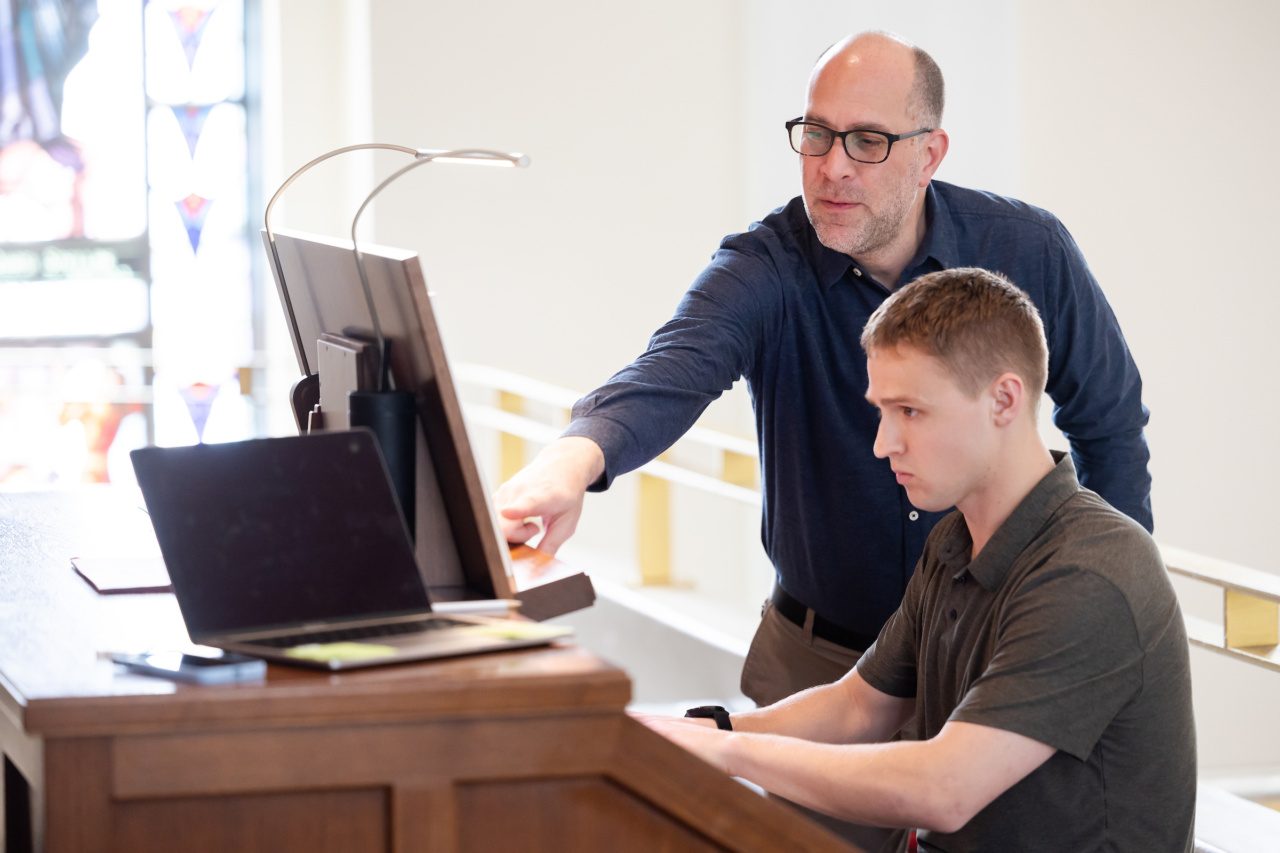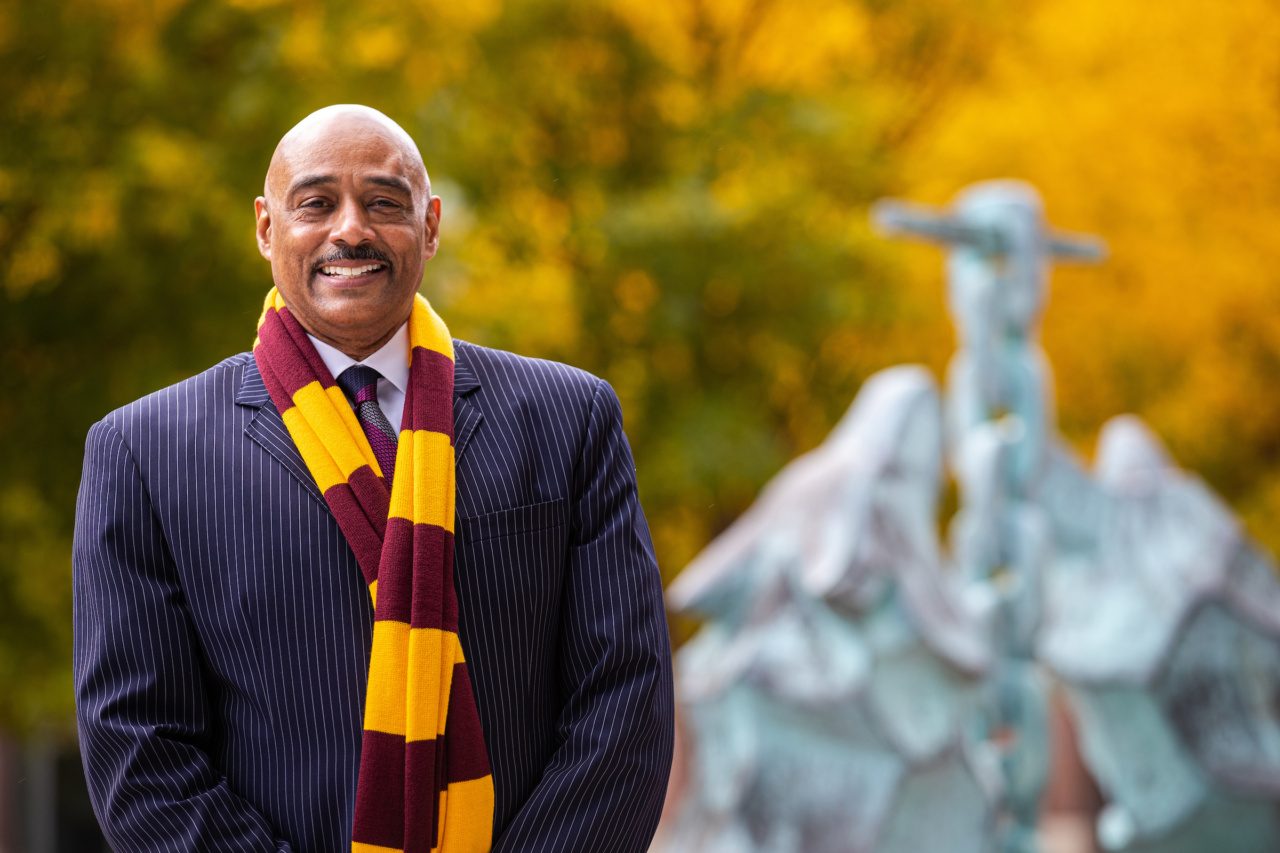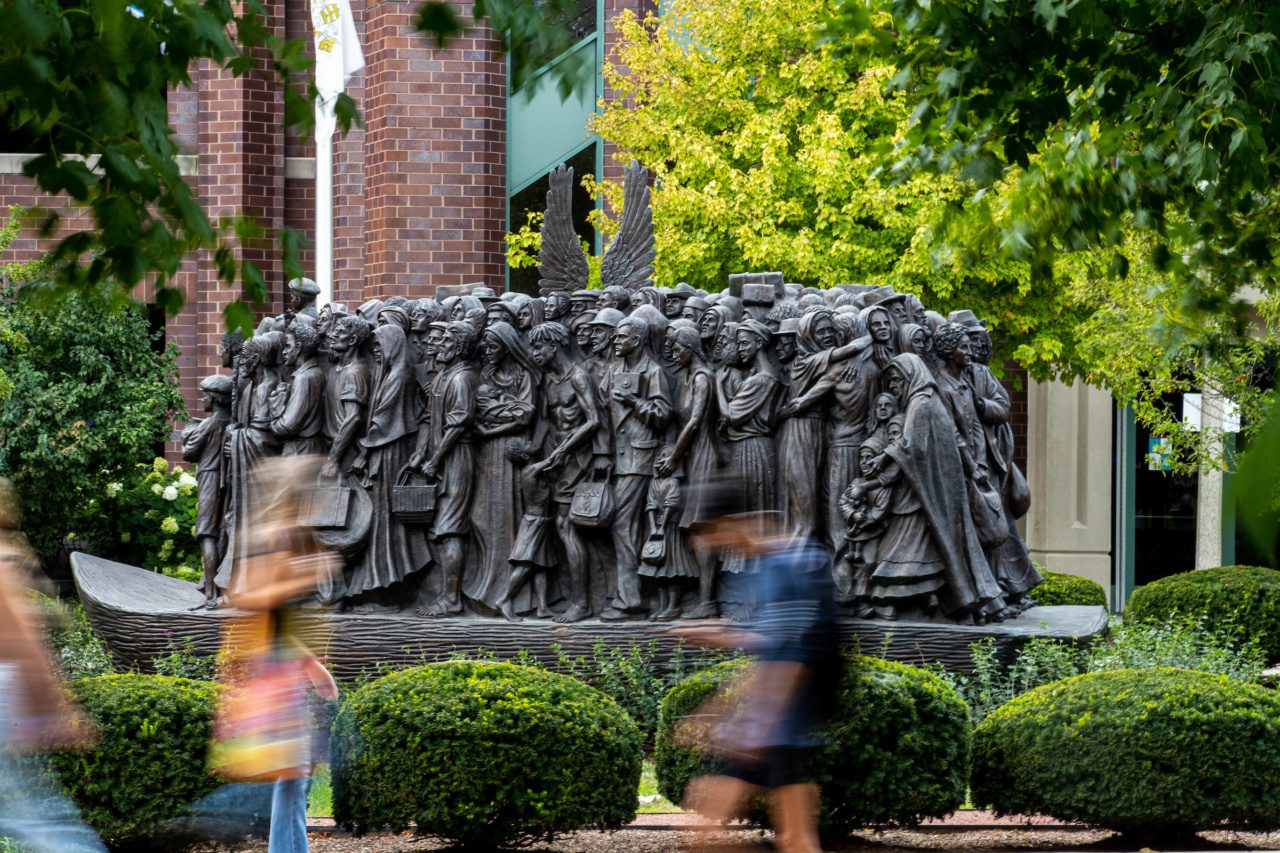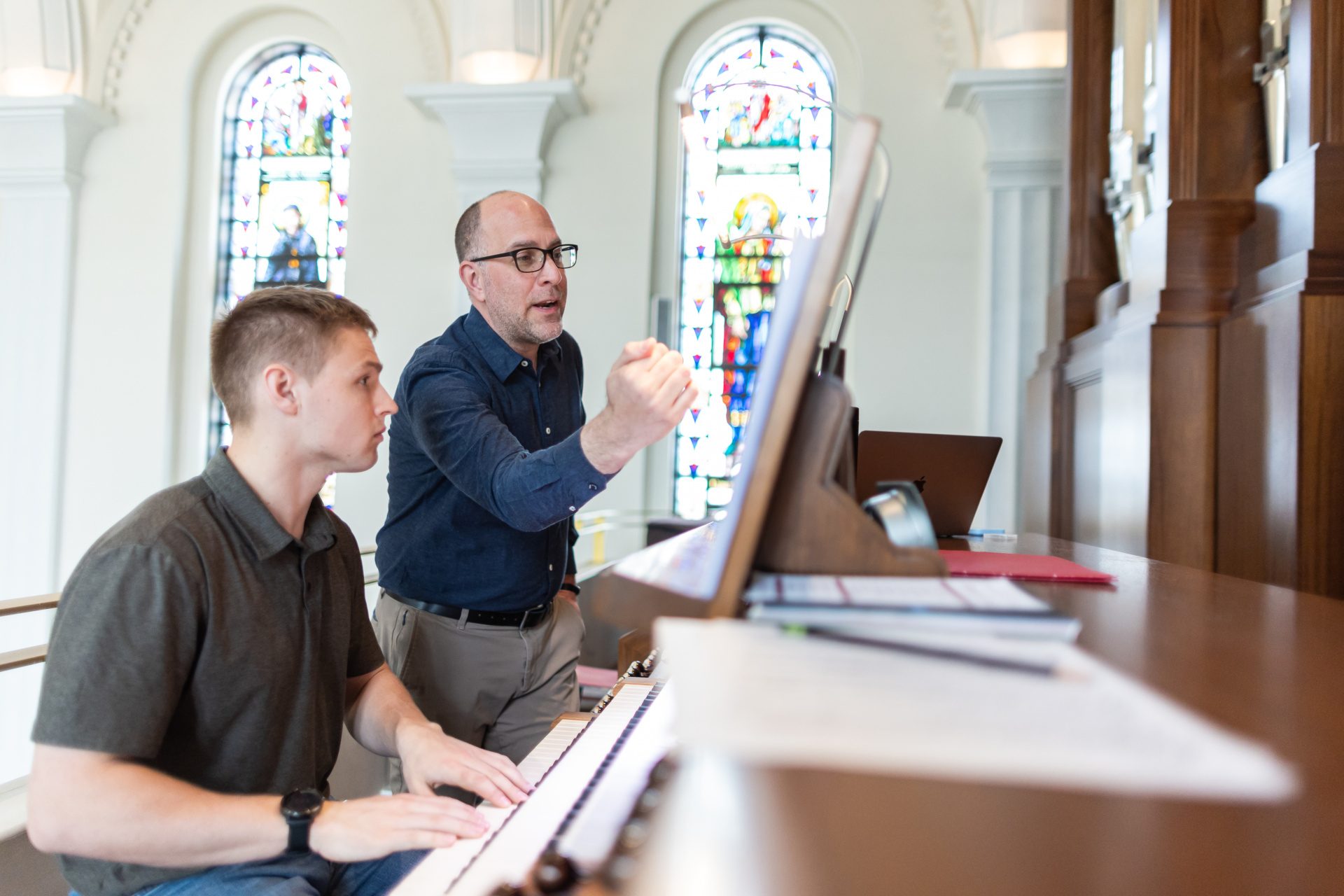
Music incarnate: Inside Madonna della Strada’s pipe organ
If you’re quiet, you can hear the organ breathing.
Even before a player strikes a key, the towering pipe organ in Madonna della Strada is drawing in a soft, steady breath from the air inside the chapel.
To those who know this instrument best, the organ seems to be a living, breathing thing. And the fact that it inhales air—which then passes through a network of tunnels and thousands of finely-tuned pipes to emerge, resonant and profound, as music in the chapel—is just one of the reasons.
On a breezy day in March, Steven Betancourt, the director of campus ministry and current director of liturgical music at Madonna della Strada, was up in the balcony at the back of the chapel. He sat beside a student in front of the four keyboards that control the organ—three of which are played with the hands and one which is played with the feet.
The organ, an impressive wall of pipes encased in dark wood, rose above them. The student was Brennan Dour, S.J., a Jesuit scholastic pursuing a master’s degree in theology at Loyola. Dour and Betancourt spoke in hushed tones as they discussed the composition at hand. Then Dour would press a pedal with his foot while playing the keyboard and the previously silent chapel would vibrate with sound. As they played, then paused for discussion, then played again, a few students, one by one, entered the chapel below them. One put her backpack down and sat facing the sanctuary, the music tumbling down over her.
When their lesson concluded, Dour swapped his organ-playing shoes for street shoes and took the staircase down from the balcony. Another student’s lesson was about to begin.
Dour first began playing the organ when he was 12 years old, in Bremerton, Washington, where he grew up. Once he arrived at Loyola, a fellow Jesuit scholastic recommended he reach out to Betancourt to keep learning.
Dour said that Betancourt encouraged him to bring his own personality to the organ. “He’s a great teacher,” he said. “I might be playing something technically correct but Steve tells me to make it my own.”
Taking time to learn the instrument has been an important break in Dour’s studies, he says. And it seems like coming to listen has been an important break for others on campus as well. Students will wander in during the evening while he’s playing. Sometimes he’ll end up chatting with them once he finishes. These conversations often start out casually but can end up feeling “quite pastoral,” he says.
“It’s a transcendent instrument,” he says. It’s visceral, powerful and just plain loud. “It feels like a fighter jet. The sound is hitting every part of your body. Your heart is elevated,” he says. Dour aspires to move others with the music. “I hope it continues the graces of the mass out into the rest of the day.”
Whether those who experience it do so as part of a religious or aesthetic experience, the body and the mind seem to respond to the power of the organ.
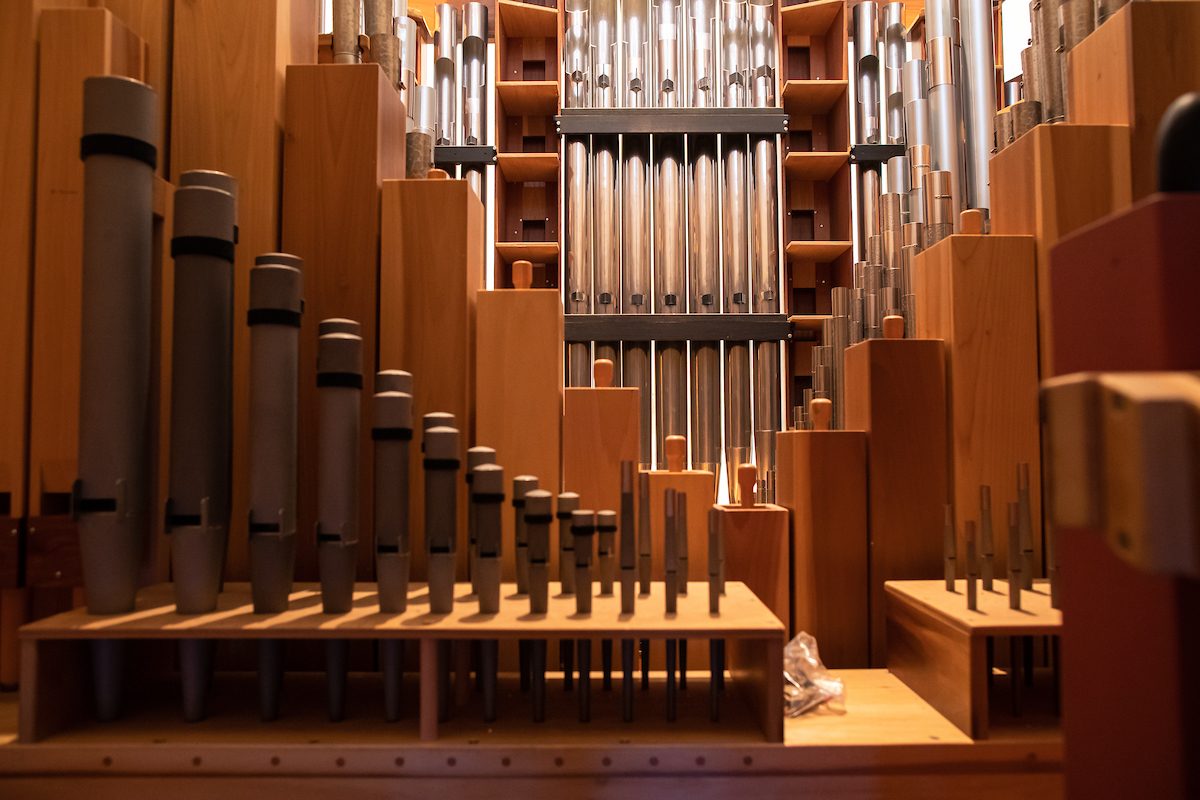
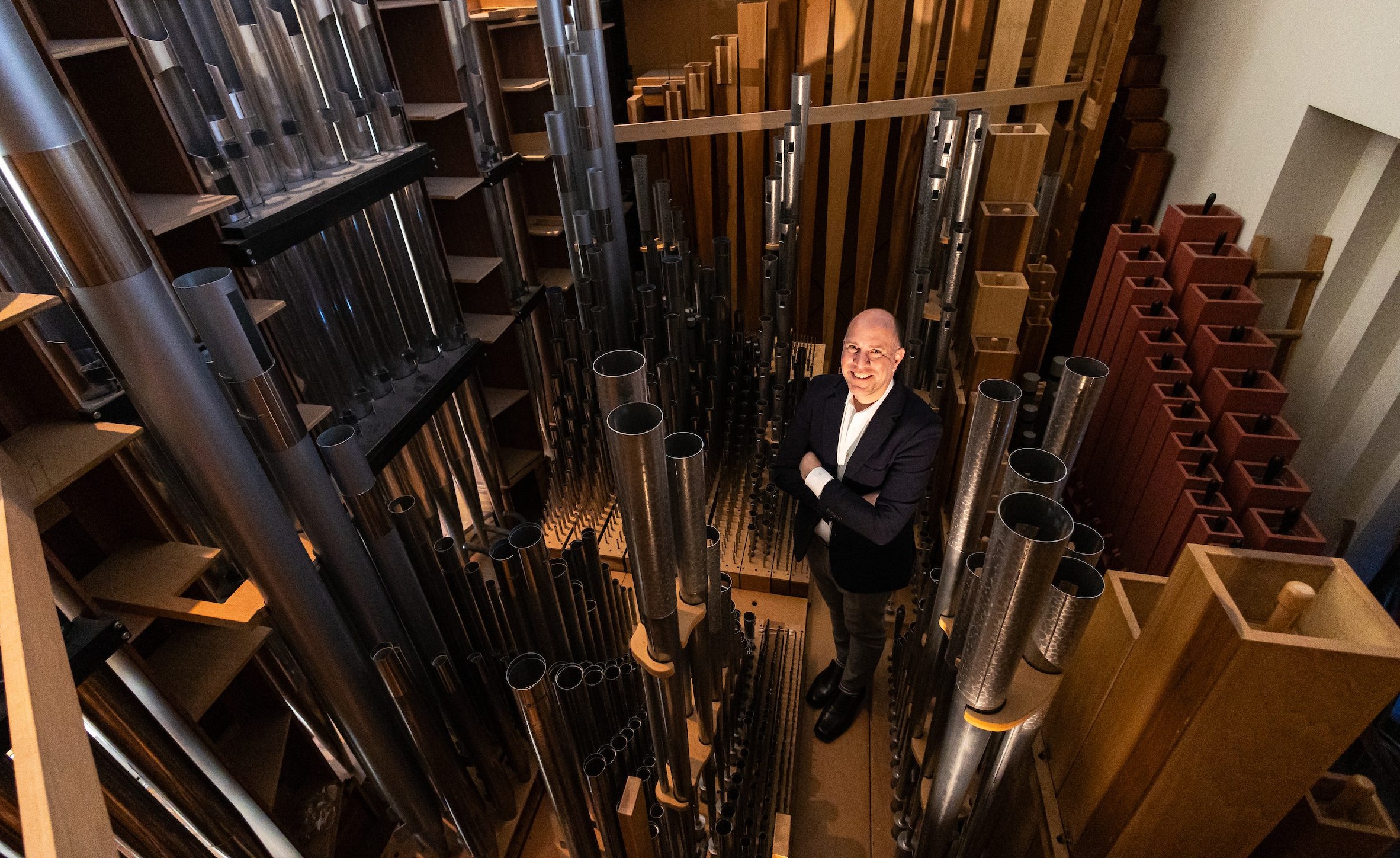
Back up in the balcony, Betancourt was finishing up his second lesson. When it was over, he said goodbye to his student, opened a small door in the facade of the instrument and disappeared inside. Luckily, there was room inside for two, so Betancourt held the door open and then acted as a tour guide to the inner sanctum of the organ.
Once inside, the instrument reveals its secrets. Metal and wood pipes—3,747 of them—rise up toward the ceiling, some as thick as young trees and some as thin and short as piccolos. Off to the side is one of three wind reservoirs. It’s a wooden box with a leather “lung” that maintains a gentle pressure on the incoming air—holding it until a key or pedal is struck on the keyboards.
This particular instrument is relatively new. Construction on it began right after the chapel’s multi-year renovation, which was completed in August 2007. The chapel’s original organ was built in 1947, but part of it was breaking, Betancourt says. Since an organ is so connected to the space that houses it, the University’s building committee knew it needed to spring for a new instrument as soon as the renovation was complete. “It was a once-in-a-lifetime chance to get it right,” Betancourt says.
It was important that they start once the renovation was over because dust and organs don’t mix, Betancourt says. Inside the instrument, he holds up one of the pipes. It’s a long tube with an opening called a mouth. He pointed to some nearly invisible notches along the edge of the mouth that help focus the sound. A few specks of dust could get trapped and the pipe wouldn’t make any noise. (“Bugs and birds find their way in” as well, Betancourt says—but that’s another story.)
The organ was built by a team of 14 at Goulding & Wood, pipe organ builders based in Indianapolis. Betancourt collaborated with their team to determine just what type of sound would fit the chapel. “Some organs are bright, or sizzly or nebulous,” he says. But due to the chapel’s hard surfaces—plaster, marble, and cement—Betancourt knew that “the sparkly stuff, the higher pitches” would really soar in the space and could become too intense. So, he worked with the team to create a substantial low base. He said it was like putting together a singing group with two sopranos but eight altos.
It’s a transcendent instrument. ... It feels like a fighter jet. The sound is hitting every part of your body. Your heart is elevated.
— Brennan Dour, S.J., Master of Theology student
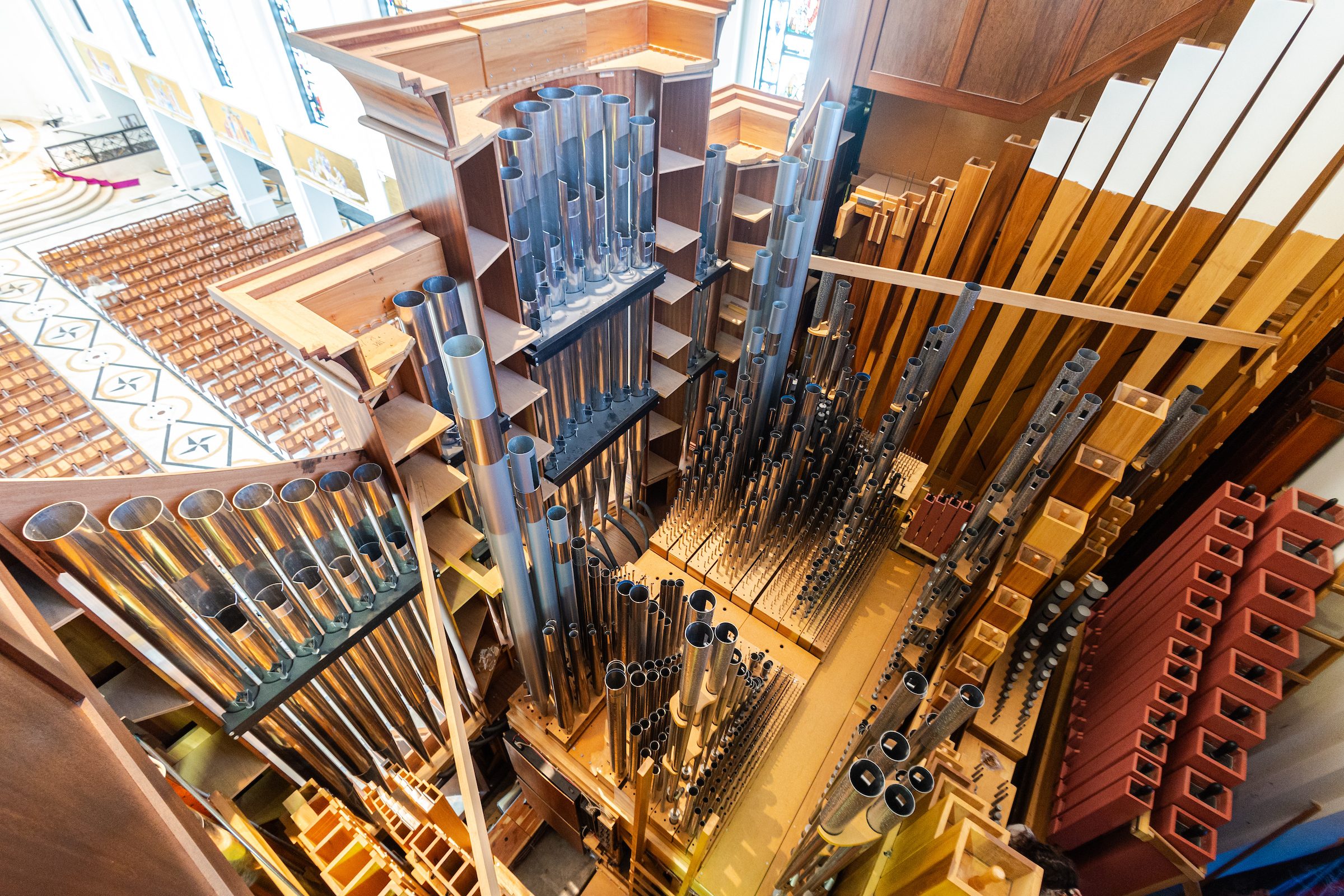
This summer marks a change in Betancourt’s role at Loyola. He will remain director of campus ministry, but he’ll take a slight step back from the organ. On June 17, Peter Morey, who was the associate director of music and organist Saint Luke’s Church in Evanston, will become campus minister for Catholic liturgical music at Loyola.
But Betancourt doesn’t feel like he’s leaving the instrument behind. “My love for the organ won’t change or diminish. It’s almost a part of my cultural heritage,” he says. Instead of doing two jobs, he’ll be able to do one and this, he hopes, will give him more time to appreciate the organ in other ways.
“I’m still here at the University. I’ll still be a part of the life of the chapel,” he says. “I still will get to benefit in partaking as a singer in the congregation and through prayer.” And he hopes that he might serve as backup if Morey ever needs him.
“I was thinking about this the other day,” he says. He had a discussion with someone who recently got a new organ. “They were already thinking about changes they’d like to make,” he says. “I’ve never felt that way. With this organ, we were given a great gift.”

